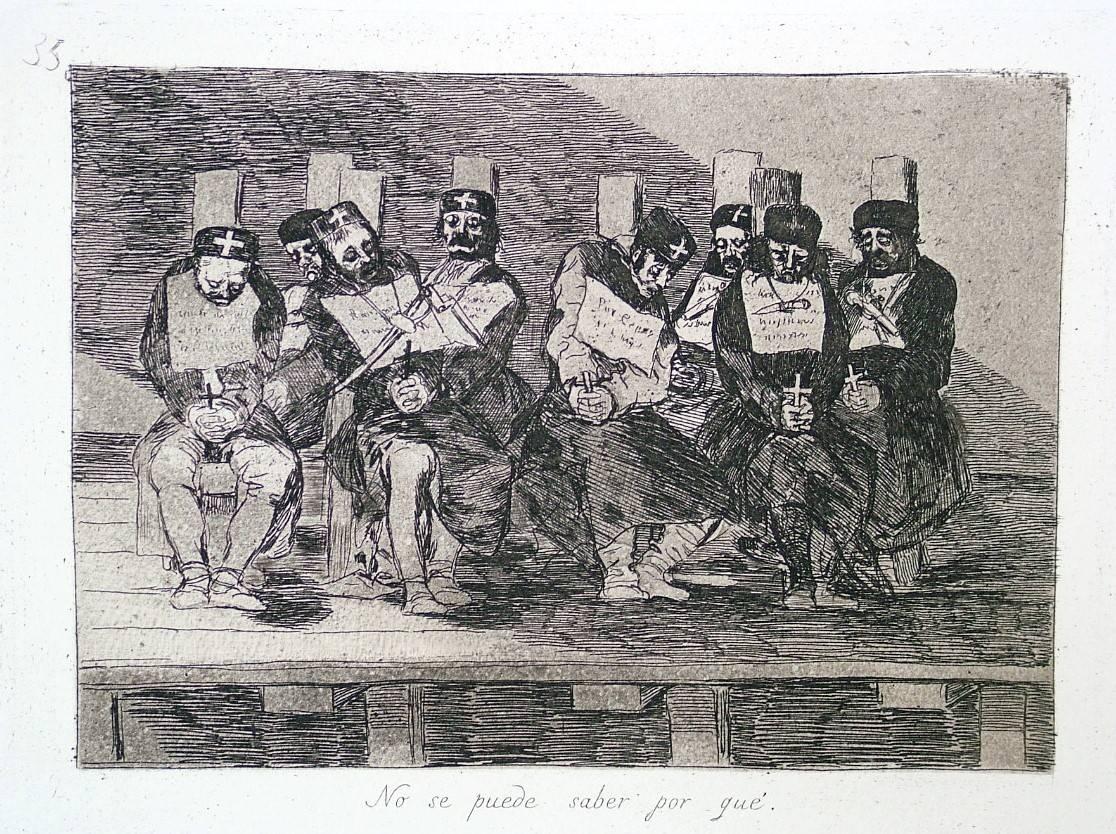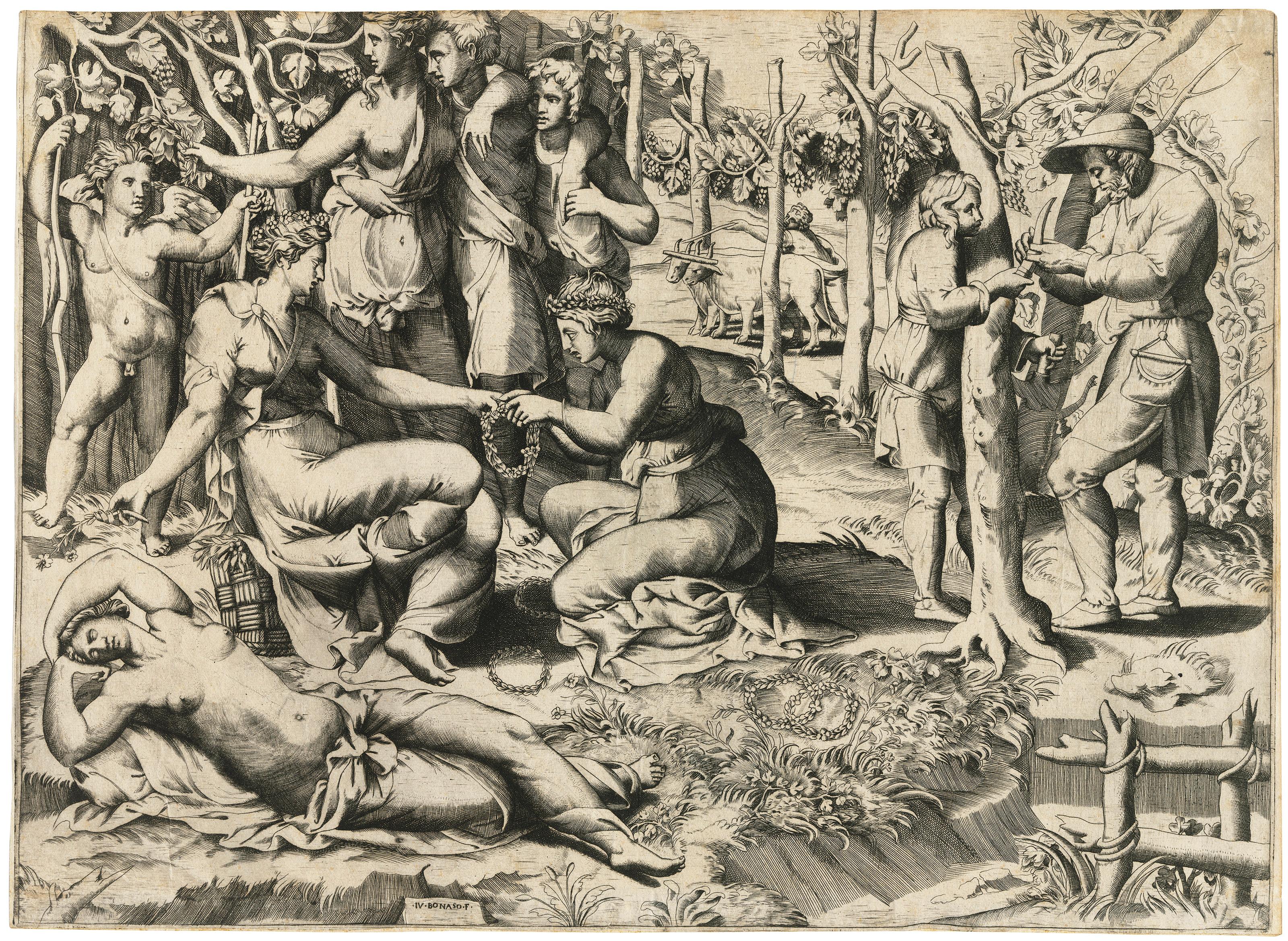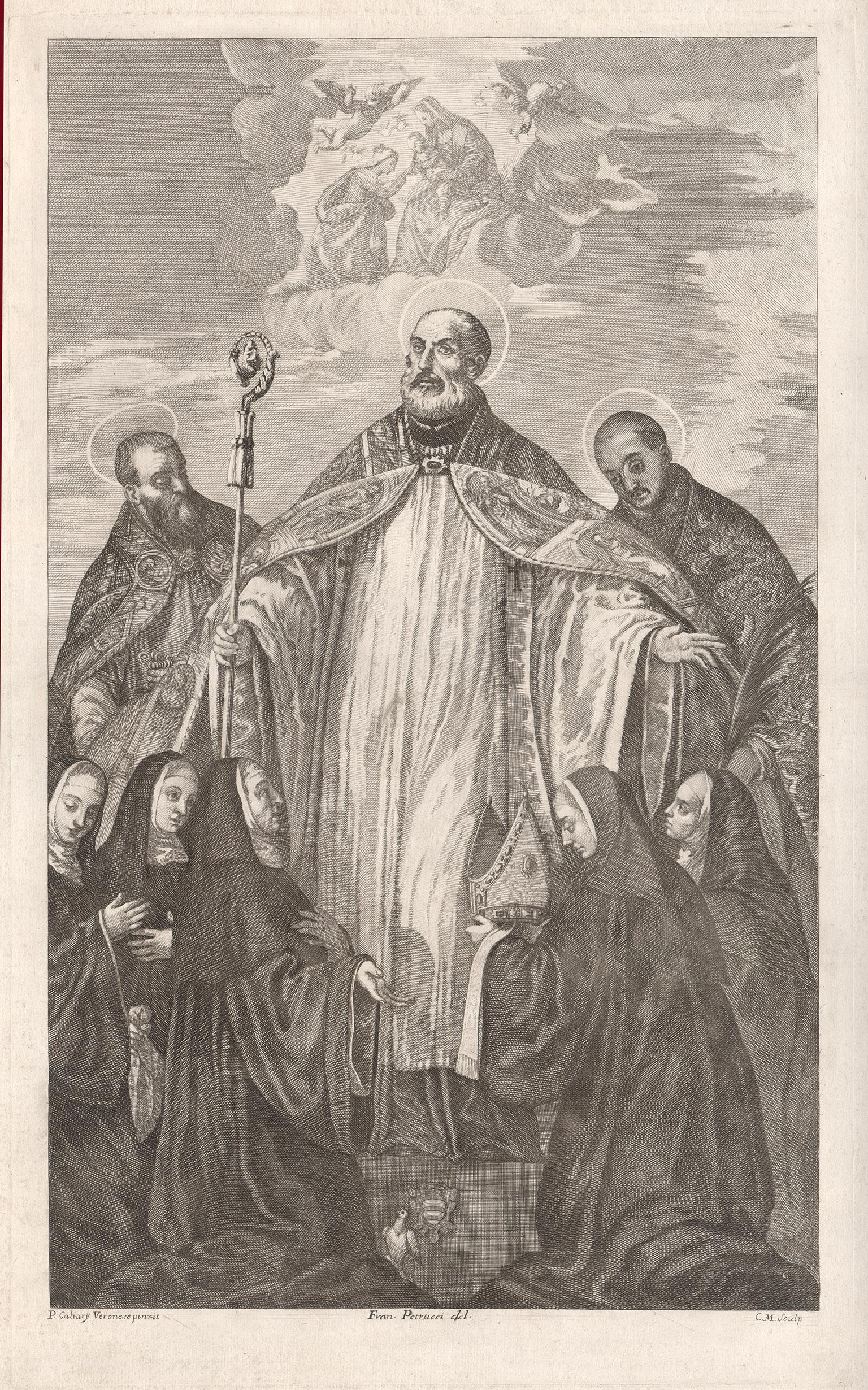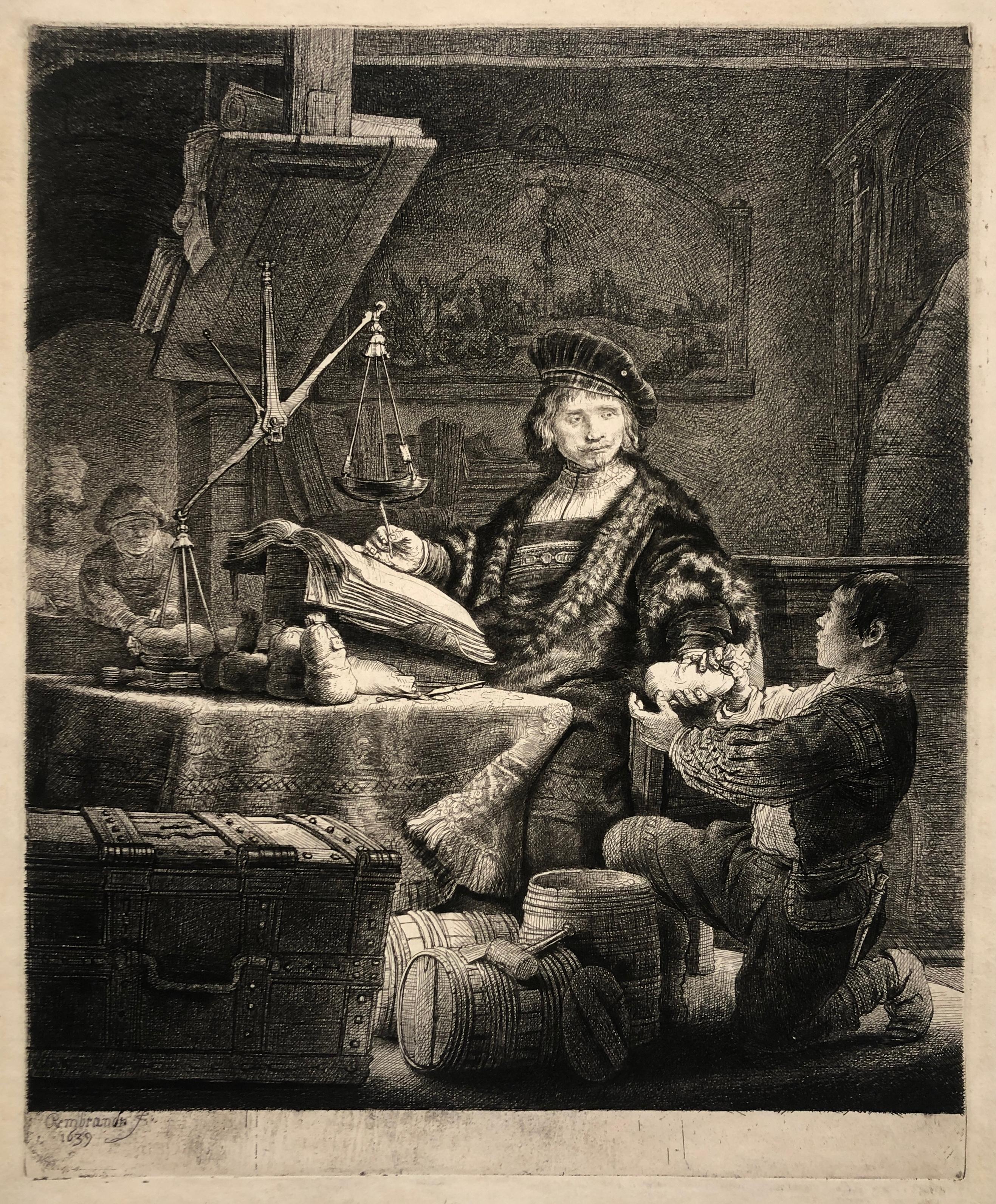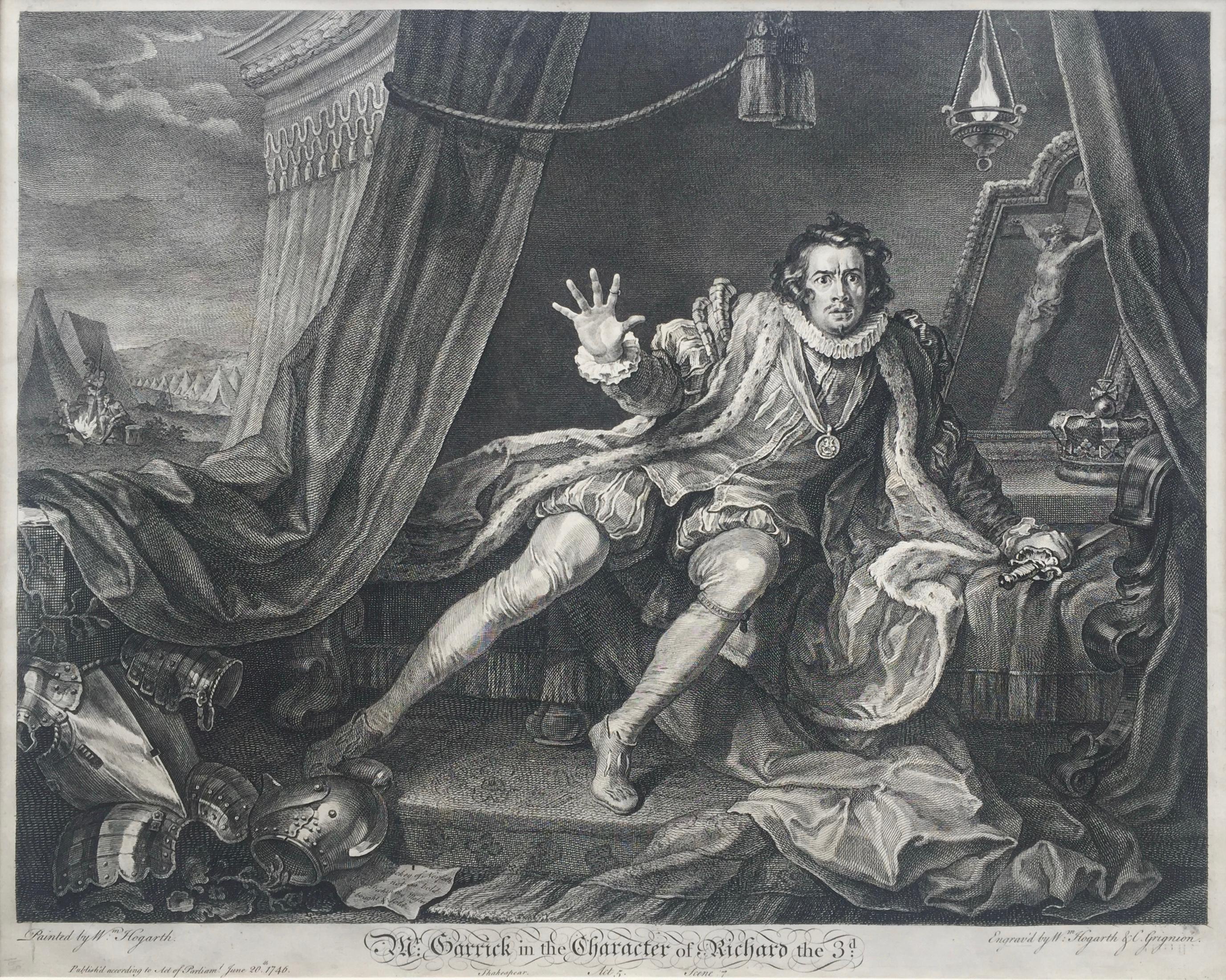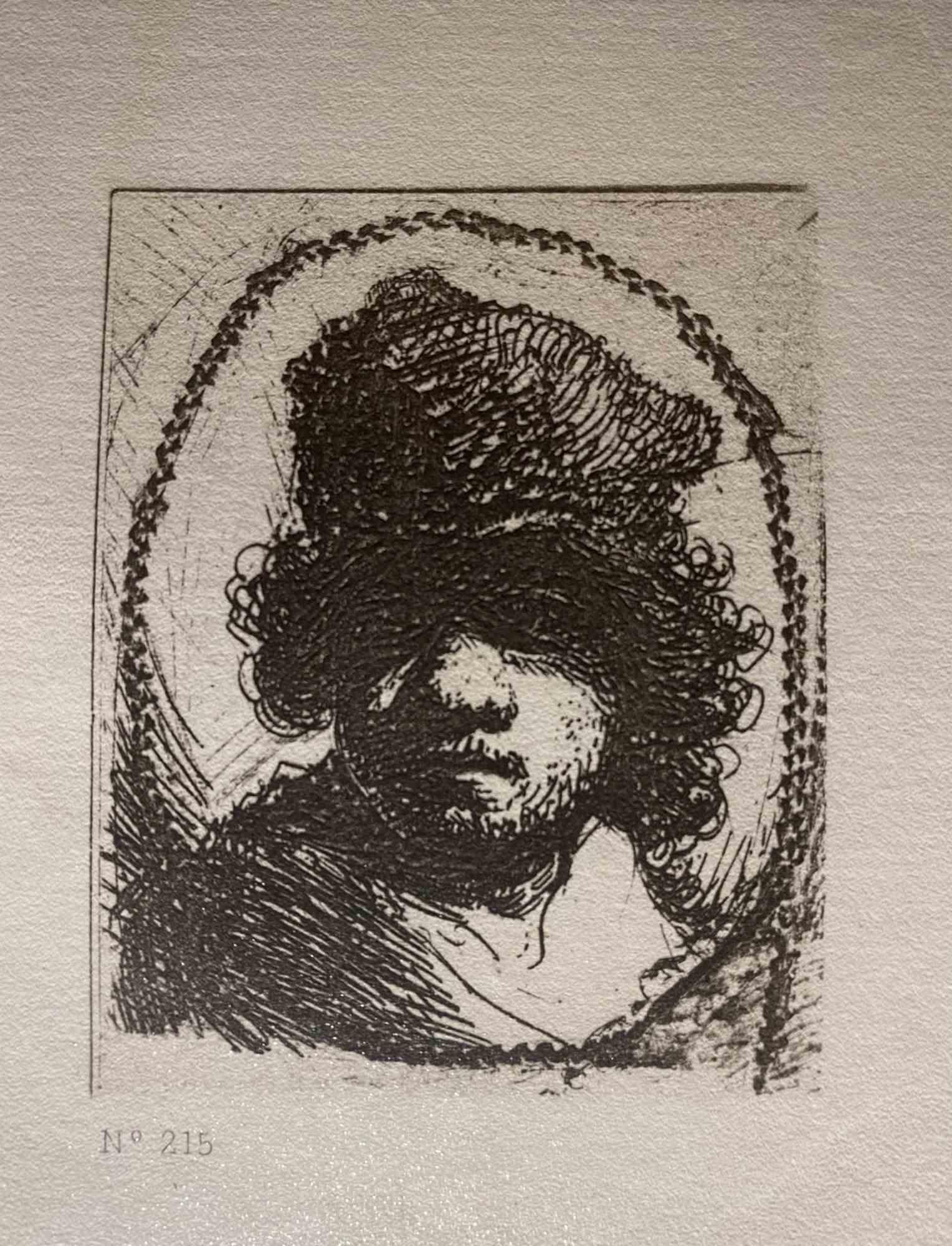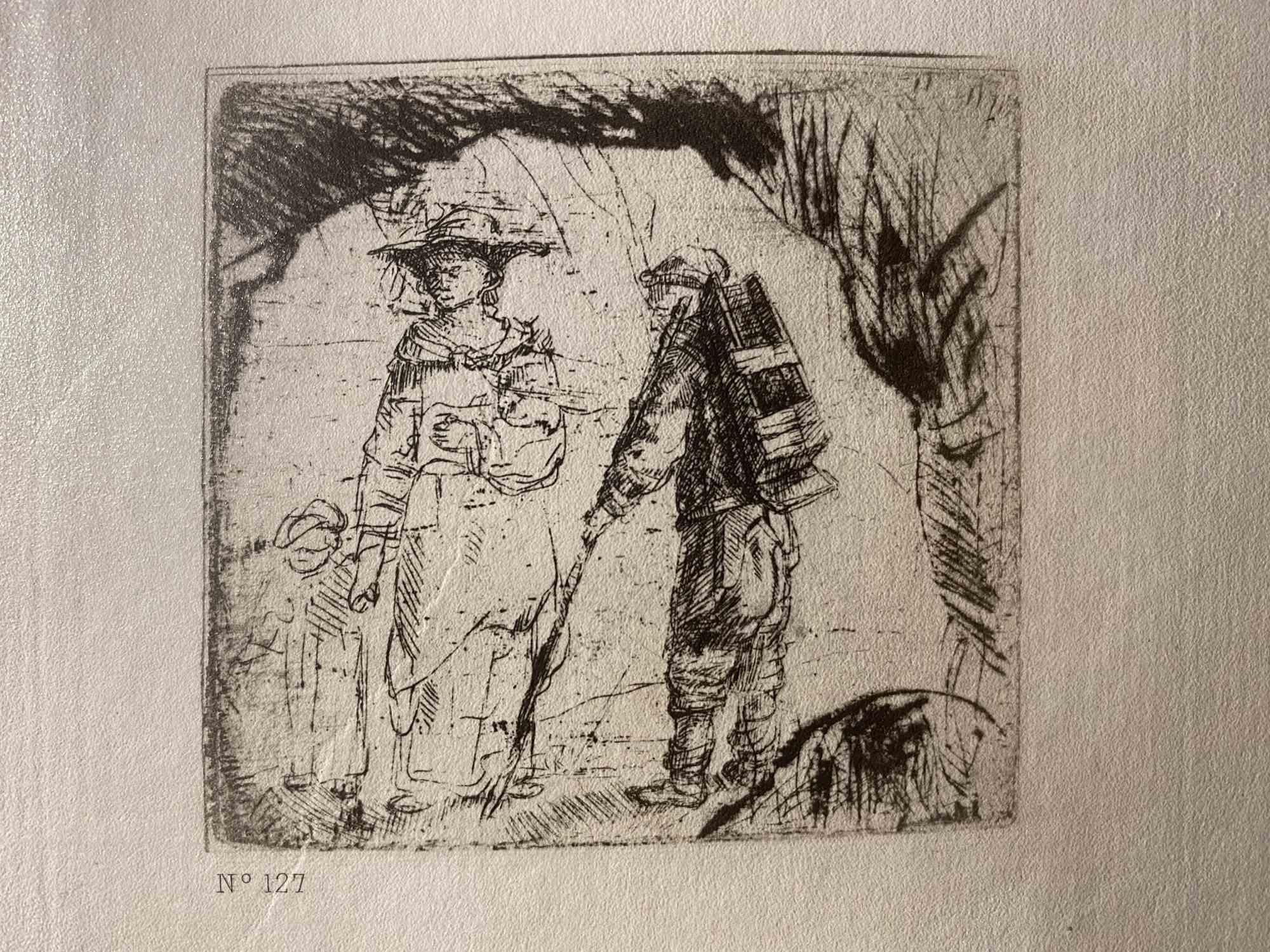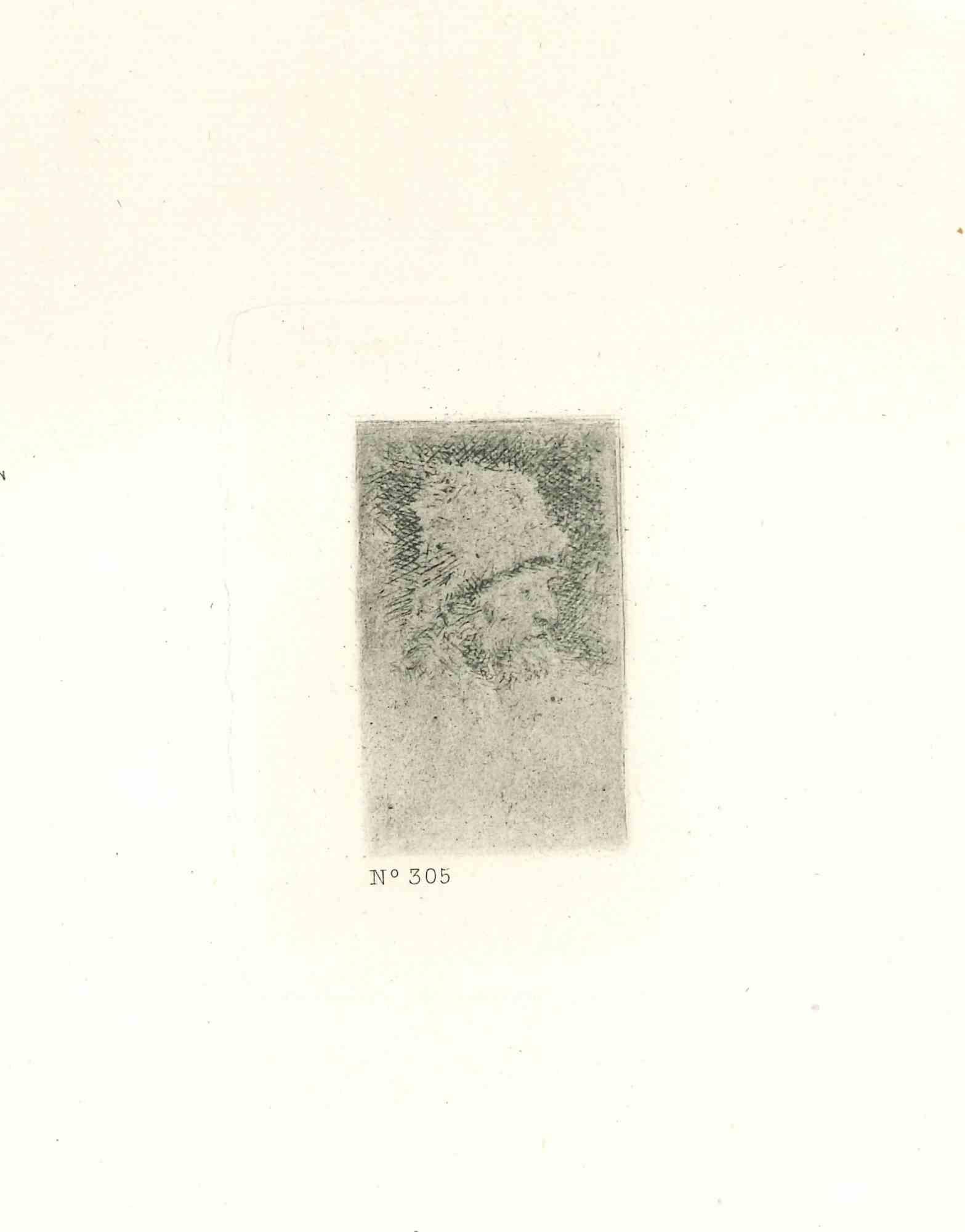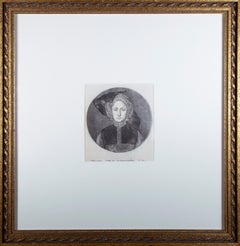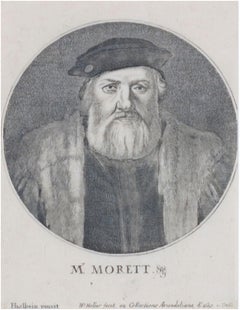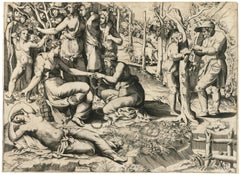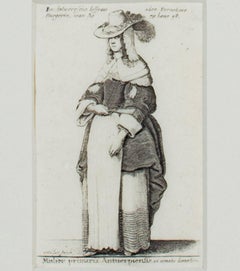
"Woman in a European National Dress, " original engraving by W. Hollar
Want more images or videos?
Request additional images or videos from the seller
1 of 5
Wenceslaus Hollar"Woman in a European National Dress, " original engraving by W. Hollar1643
1643
About the Item
- Creator:Wenceslaus Hollar (1607 - 1677, Czech)
- Creation Year:1643
- Dimensions:Height: 10.63 in (27.01 cm)Width: 9.38 in (23.83 cm)
- Medium:
- Movement & Style:
- Period:Mid-17th Century
- Condition:
- Gallery Location:Milwaukee, WI
- Reference Number:Seller: 9835g1stDibs: LU60531956813
About the Seller
4.9
Platinum Seller
These expertly vetted sellers are 1stDibs' most experienced sellers and are rated highest by our customers.
Established in 1966
1stDibs seller since 2017
392 sales on 1stDibs
Typical response time: 1 hour
More From This SellerView All
- 'Portrait of a Young Woman' original Hollar engraving after Hans HolbeinBy Wenceslaus HollarLocated in Milwaukee, WIIn this print, Wenceslaus Hollar presents a portrait of an unidentified woman, copying a portrait by Hans Holbein the Younger. The identity of the sitter is a mystery: formerly, the portrait was believed to be of Catherine of Aragon, and the National Portrait Gallery in London identifies her as Queen Mary I...Category
17th Century Old Masters Portrait Prints
MaterialsEngraving
- 'Portrait of Henrico van der Borcht, ' original W. Hollar engraving after HolbeinBy Wenceslaus HollarLocated in Milwaukee, WIIn this print, Wenceslaus Hollar presents a portrait of D. Henrico van der Borcht, copying a painting or drawing by Hans Holbein. Copying works of famous masters was a common task of...Category
17th Century Old Masters Portrait Prints
MaterialsEngraving
- 'Portrait of M. Morett, ' original Wenceslaus Hollar engraving after Hans HolbeinBy Wenceslaus HollarLocated in Milwaukee, WIIn this print, Wenceslaus Hollar presents a portrait of Charles de Solier, comte de Morette, copying a painting and a drawing by Hans Holbein the Younger - both of which are kept in ...Category
17th Century Old Masters Portrait Prints
MaterialsEngraving
- "Nicolas Poussin, Homage, " Color Lithograph signed by Claude WeisbuchBy Claude WeisbuchLocated in Milwaukee, WI"Nicolas Poussin, Homage" is an original color lithograph by Claude Weisbuch. The artist signed the piece in the lower right and wrote the edition numb...Category
1970s Old Masters Figurative Prints
MaterialsLithograph
- "Anatomie d'Un Reve, " Original Color Lithograph signed by Claude WeisbuchBy Claude WeisbuchLocated in Milwaukee, WI"Anatomie d'Un Reve" is an original color lithograph by Claude Weisbuch. The artist signed the piece in the lower right and wrote the edition number, IX/CXXX, in the lower left. This...Category
1970s Old Masters Figurative Prints
MaterialsLithograph
- 'The Smoker (Le Fumeur)' original etching by Cornelis-Pietersz BegaBy Cornelis BegaLocated in Milwaukee, WI'The Smoker (Le Fumeur)' is an original etching by the celebrated Dutch painter and printmaker Cornelis-Pietersz Bega. It presents a genre scene of the type Bega was best known for: Bega's principal subjects were genre representations of taverns, domestic interiors and villages. He depicted nursing mothers, prostitutes, drunks, gamblers and fools such as quack doctors and alchemists. In this case, he shows a man seated on a chair with his foot on a flat stool and holding a smoking pipe. For Bega, this representation was more of a caricature than it was an image of a specific person, and such genre scenes would have held allegorical and symbolic meaning for the seventeenth-century viewer. During the seventeenth century, the Dutch of all levels of society consumed tobacco and alcohol, and these were an important part of the Dutch economy and a major source of wealth. At the same time, however, moralists and ministers sought to curb intoxication: they openly described drinking and smoking as sinful, immoral, and a general threat to one’s reputation. This paradox is reflected in prints such as this, which inherently carry the national pride of the Dutch economy alongside a moral warning in a print that could be just as easily consumed and collected. 2.5 x 2.25 inches, print 12.38 x 10.38 inches, frame Framed to conservation standards using archival materials including 100 percent rag matting and mounting materials. Housed in a gold finish Spanish-style wood moulding. Overall good and stable condition; margins cut to plate; some wrinkling in the corners from previous mounting; housed in a new custom frame. Cornelis Bega was born into prosperous circumstances. His mother, Maria Cornelis, inherited half the estate (gold, silver, paintings, drawings and prints) and all of the red chalk drawings of her father, Cornelis Cornelisz van Haarlem, a renowned Mannerist artist. Bega's father was Pieter Jansz Begijn (d 1648), a gold and silversmith. Like other family members, Bega was probably Catholic. Houbraken's claim that Bega studied with Adriaen van Ostade is likely to be correct; this was probably before 24 April 1653, when Bega joined Vincent Laurentsz. van der Vinne in Frankfurt for a journey through Germany, Switzerland and France. Bega had returned to Haarlem by 1 September 1654, at which time he joined the Guild of St Luke; he was already a competent draughtsman, as indicated by his first extant dated work, Interior with a Nursing Mother (1652; Frankfurt am Main, Städel. Kstinst.), and by a remarkable double portrait (Amsterdam, Rijksmuseum) drawn by him and Leendert van der Cooghen in 1654. Bega painted, drew, etched and made counterproofs in a wide variety of materials on different types of small-scale supports. He may have been the first Dutch artist to make monotypes, but this remains controversial. Approximately 160 paintings, 80 drawings and six monotypes by Bega have been catalogued, as well as around 34 etchings. Bega's principal subjects were genre representations of taverns, domestic interiors and villages. He depicted nursing mothers, prostitutes, drunks, smokers, gamblers and fools such as quack doctors and alchemists. Less common subjects include the ridiculed or pestered woman, as in Two Figures and Mother with a Spirits Bottle (c. 1662; Gouda, Stedel, Museum Catharina Gasthuis) and The Inn (etching), as well as witty satires on traditional scenes of middle-class music-makers, such as the Music Lesson (1663; Paris, Petit Palace). Bega's early paintings, such as the Weaver's Family (c. 1652; St Petersburg, Hermitage), are freely executed, dark and coarse, recalling the many-figured peasant subjects of van Ostade. Between c. 1660 and 1664 he began to paint genre scenes with fewer figures, which are finely articulated, colourful and psychologically expressive, for example Two Men Singing (1662; Dublin, N.G.). His exquisite, late fijnschilderen ('fine painting') manner, evident in The Alchemist (1663; Malibu, Getty Museum), compares well with that of Gerrit Dou. As a draughtsman Bega is noted for his single-figure studies, executed mainly in black and white chalk on blue paper or red chalk on white paper. None of the studies, which were drawn naer het leven (from life), seem to relate to a painting or etching. Bega traded drawings or shared models with other artists of the Haarlem school, including van der Cooghen, Gerrit Berckheyde, Dirck Helmbreker and Cornelis Visscher. These artists drew chalk figure studies in a very similar style, characterised by regular and precise parallel shading and well-defined forms; their drawings, especially those of Bega and Berckheyde, have been frequently confused. Unlike the realistic figure studies, Bega's etchings depict interiors with figures or single figures in the manner of van Ostade; the compositions, often with masterful chiaroscuro effects, reflect most closely the paintings of the 1650s. Bega is likely to have remained in Haarlem, where he paid dues to the Guild in 1661. He probably died from the plague; fees for his expensive funeral at St. Bavo's were paid on 30 August 1664. Among the artists he influenced were Thomas Wijck, Jan Steen, Richard Brakenburg (1650-1702) and Cornelis Dusart. Painters such as R. Oostrzaen ( fl ?1656) and Jacob Toorenvliet...Category
17th Century Old Masters Figurative Prints
MaterialsEtching, Paper
You May Also LikeView All
- One Can't Tell Why - Proof from the Disasters of WarBy Francisco GoyaLocated in New York, NYFrancisco José de Goya y Lucientes (1746 Fuendetodos – Bordeaux 1828), No se puede saber por qué – One can’t tell why ca. 1808–1814, etching, burnished aquatint, drypoint, an...Category
1810s Old Masters Figurative Prints
MaterialsDrypoint, Etching, Aquatint
- Flora with her Nymphs, after Giulio RomanoLocated in New York, NYGIULIO BONASONE (1510-1576) AFTER GIULIO ROMANO (CIRCA1499-1546) Flora with her Nymphs engraving, circa1531-50, on laid paper, watermark Two crossed Arro...Category
16th Century Old Masters Figurative Prints
MaterialsEngraving
- San Benedetto Con Altri Nanti, religious engraving after Veronese, circa 1700Located in Melbourne, VictoriaReligious copper-line engraving by CM after Francesco Petrucci after (Paolo Caliari) Veronese. Depicts Saint Benedict and other holy figures. Paolo Vero...Category
Early 1700s Old Masters Portrait Prints
MaterialsEngraving
- Jan Uytenbogaert, The GoldweigherBy Rembrandt van RijnLocated in Boston, MABartsch 281, Hind 167 iii/III, Nowell-Usticke 281, iii/III. A fine impression, with burr, as retouched by Baillie in 1792. With an unidentified collectors stamp, verso.Category
17th Century Old Masters Figurative Prints
MaterialsDrypoint, Etching
Price Upon Request - Mr. Garrick in the Character of Richard the 3rd - FINE IMPRESSIONBy William HogarthLocated in Santa Monica, CAWILLIAM HOGRTH (1697 - 1764) MR. GARRICK IN THE CHARACTER OF RICHARD THE 3RD (Shakespear Act 5 Scene 7) (Paulson 1970.165 ii/ii; Paulson 1989.165 ii/ii;, Dobson and Armstrong p. 20...Category
1740s Old Masters Figurative Prints
MaterialsEtching, Engraving
- Two Trophies with a Breast Plate and a Ram's HeadBy Enea VicoLocated in New York, NYEnea Vico (1523-1567 engraving, Two Trophies With a Breast Plate and a Ram’s Head, 1550, Bartsch 447, with the name of the publisher Ant[onio] Lafreri at bottom, before numbers. Goo...Category
16th Century Old Masters Figurative Prints
MaterialsEngraving
